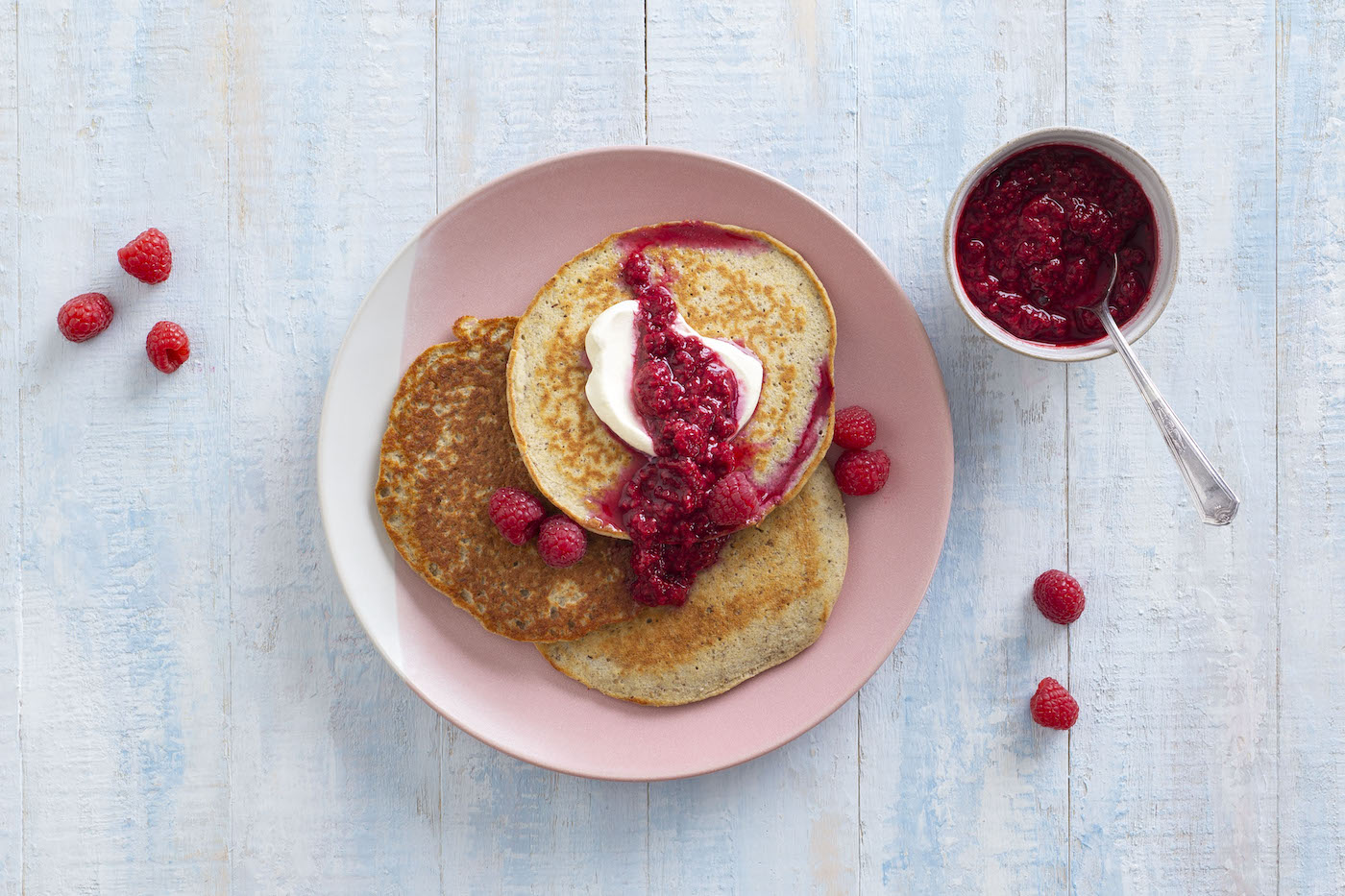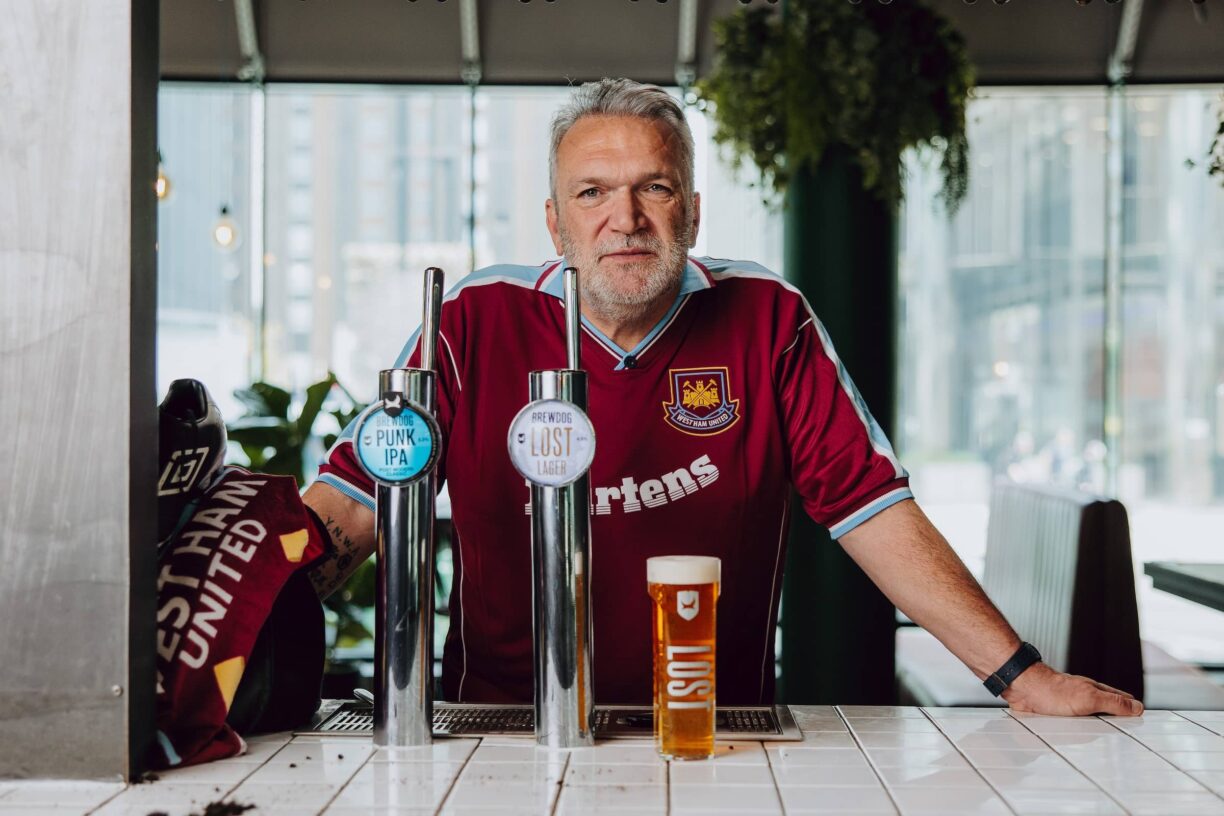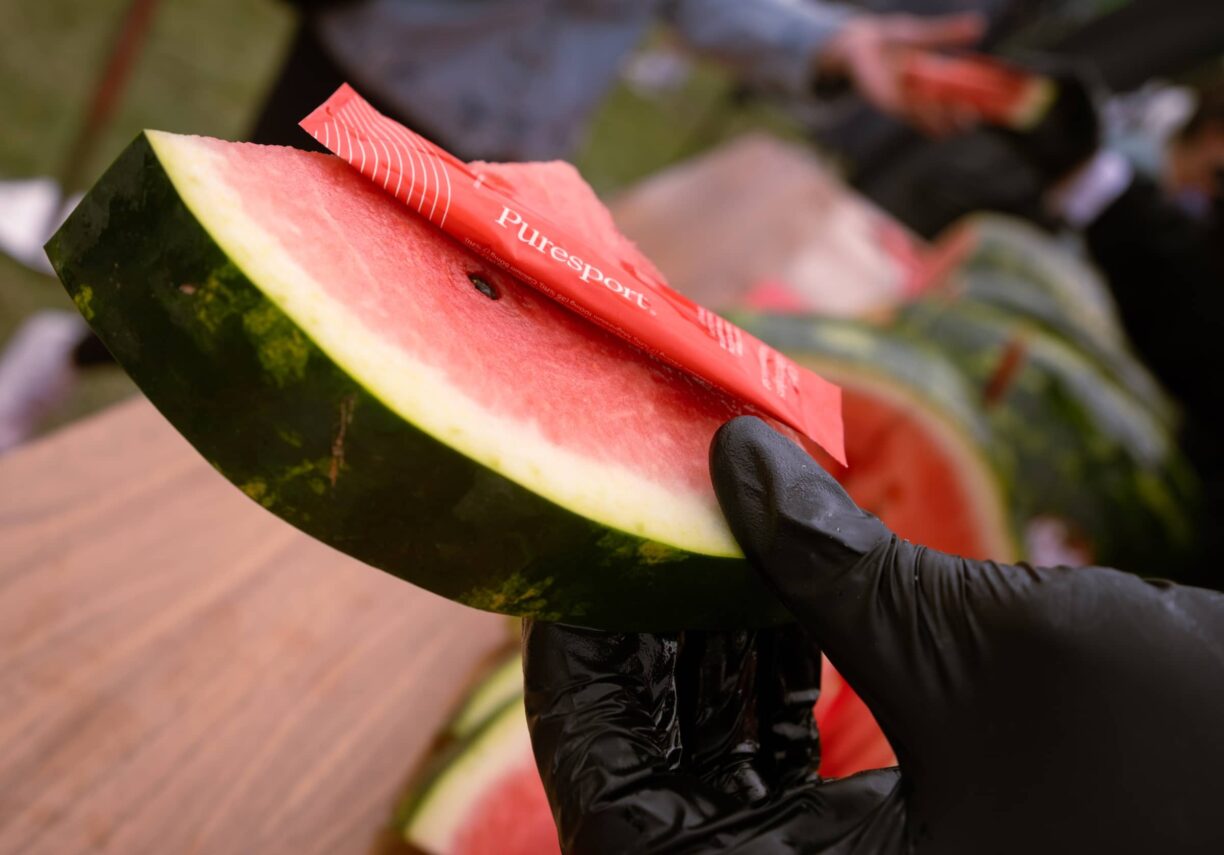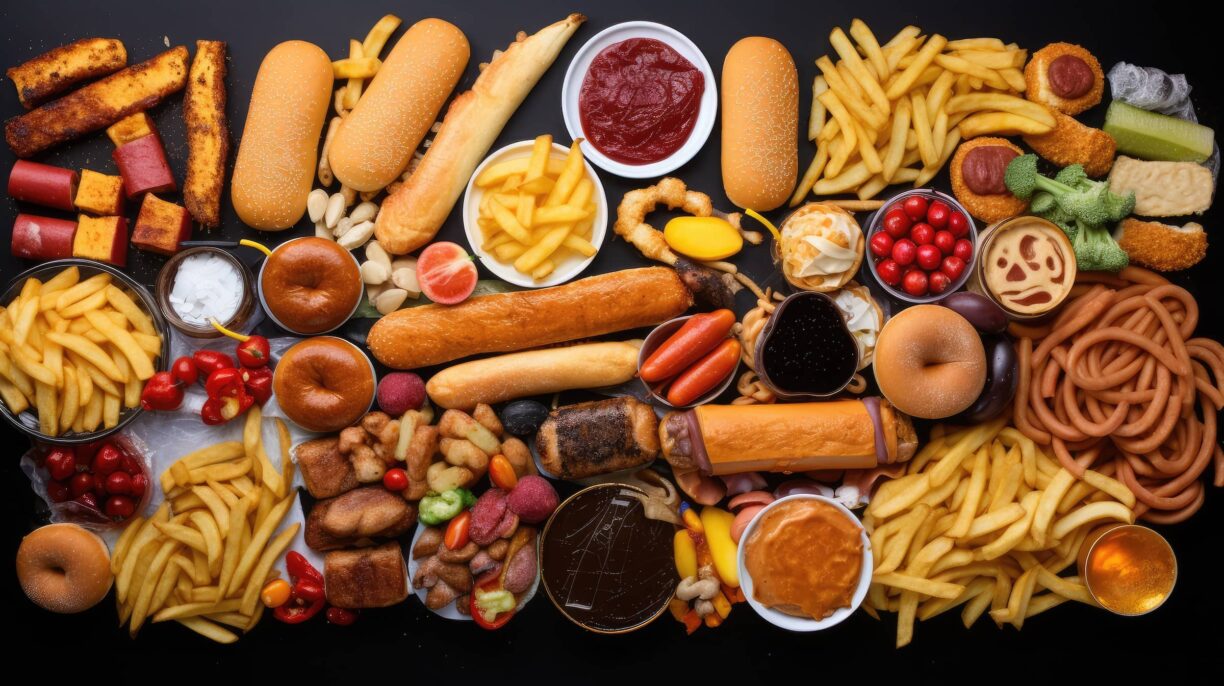Dr. Michael Mosley, the founder of The Fast 800, is a big fan of the term ‘flipping your metabolic switch’ and he firmly believes the concept can help treat obesity and type 2 diabetes, as well as improve brain health, blood pressure and inflammation.
“Your body is like a hybrid car”, Dr. Mosley explains. “It runs on two main energy sources, sugar and fat. The body will burn glucose (sugar) if it is available, which comes from carbohydrate-rich foods like bread, potatoes and pasta.
However, fat is a far more efficient source of energy, and switching from using glucose to using fat as your fuel source can lead to a host of benefits.”
Vanilla Pancakes with Raspberries
Quick and easy to whip up with a full serve of our shakes powder in each portion for added nutrition.
| Serves: | Two | Prep time: | 5 minutes | Cook time: | 15 minutes |
| Calories: | 407 (UK) | Protein: | 30.2 | Fibre: | 11.5 |
| Carbs: | 12.2 | Sugar: | 8.8 | Fat: | 23.4 |
Ingredients
100g (3.5 oz) frozen raspberries
40g (1.4 oz) almond meal
100g (3.5 oz) vanilla shake powder
1 free-range egg
125ml (4.4 fl oz) unsweetened almond milk
2 tbsp full-fat yogurt
Method
- In a small pot, over low heat, place the raspberries and stew gently.
- In a bowl, combine the almond meal and vanilla shakes powder, whisk in your egg and milk to form the batter – there should not be any lumps, if it is too thick add a splash of water.
- In a non-stick frying pan, over a medium-low heat, pour in a portion of your batter (should make 4 pancakes in total). After about 1-2 minutes, the top of the pancake should start to form bubbles and dry, flip and cook for a further minute. Depending on your frying pan you may need a dash of oil to stop the pancakes from sticking.
- Serve between two topped with raspberry coulis and a tablespoon of yogurt.
So, what does ‘flipping the metabolic switch’ actually mean when it comes to food choices and preparation?
The Fast 800 Vanilla pancakes are a GREAT example of how to carry out this simple but impactful food flip.
Conventional pancakes are made from white flour which is carbohydrate loaded, whilst this alternative version uses almond meal which is protein-rich, sustains for much longer and enables the body to burn it as a fat fuel source.
Once you’ve grasped the simple concept, you can apply the idea to many of your favourite foods.
There is a range of new recipe flips on www.thefast800.com
Why is fat a better energy source than sugar?
Dr. Michael Mosley explains the difference. “When we consume meals high in carbohydrates, the body breaks them down into glucose, causing your blood sugar levels to rise. Your pancreas releases insulin to help the body to use the sugar as fuel.
This rapidly reduces your blood sugar levels, and any glucose not used for immediate energy is stored as glycogen.”
“Once your glycogen stores are full, excess glucose is stored as fat, meaning we gain weight. What’s more, with more sugar in your blood, the pancreas makes more insulin to help distribute the glucose.
This becomes a vicious cycle called insulin resistance, that can lead to developing type 2 diabetes.”
What is ketosis?
When we eat a diet packed with healthy fats and protein, our body converts these into fuel.
“When the body has used these for energy, it breaks down the body’s fat stores instead”, explains Dr Mosley. “This is when the body begins to burn fat efficiently, flipping the metabolic switch and encouraging weight loss. This is known as ketosis.”
Food swaps:
Reduce your intake of the following:
- Simple carbs – like juices, fruit, sugar and sweet things are broken into glucose quickly and cause a rapid rise in blood sugar levels.
- Starchy carbs – found in potatoes, rice, wheat, bread, corn – similarly to simple, cause a rapid rise in blood sugars.
And opt for these carbs instead:
- Complex carbs – found in vegetables, take longer to digest meaning there’s a more gradual rise in blood sugars.
- Fibre – a form of complex carbs that is non-digestible, it feeds the gut microbiome and supports healthy digestive function.
“My advice is to cut down on soft drinks, sweets, rice, potatoes, bread and fruit juice and choose non-starchy vegetables, whole grains and legumes”, says Dr. Mosley.
“A low carb diet doesn’t mean it’s a no-carb diet. There’s room for plenty of low carbohydrate vegetables.”
By following a Mediterranean-style diet, rich in protein, fibre, healthy fats and some complex carbs, you can flip your metabolic switch while reaping the benefits that come with, what studies say may be, the healthiest diet out there.
“It can take anywhere from a few days to a few weeks to flip the metabolic switch and begin seeing the benefits”, says Dr Mosley.
“By continuing to follow meal plans provided, you’ll be on track. Trust the science, stick with it and you absolutely will see progress.”
What is The Fast 800?
The Fast 800 is a weight loss plan based on cutting-edge medical research. It works! It’s not so much a diet, as a bespoke weight loss planner, designed to fit around your own needs.
It embraces time-restricted eating, the Keto diet and the Mediterranean principles of consuming a diet rich in healthy proteins and vegetables and lower in carbs.
Most rapid weight loss studies are now based on 800 calories a day, which is high enough to be sustainable and give the nutrients you need, and low enough to lead to rapid weight loss and other beneficial health changes.
It comprises of three ‘tracks’ or options and is combined with advice on planning, exercise and mindfulness.
- The Very Fast 800, a 12-week very low calorie (800 per day) plan for rapid weight loss
- The New 5:2, which counters insulin resistance with regular two-day fasting regimes, where you consume two meals with a total of 800 calories per day.
- The Way of Life, which works either as a great maintenance plan for those who have achieved their goals, or as an entry-level plan for those considering their next options
The Fast 800 diet is based on the Mediterranean diet and the key principles are simple:
- Dailyconsumption of vegetables, fruits, wholegrains and healthy fats
- Weeklyintake of fish, poultry, beans and eggs
- Moderate portions of dairy products
- Limited intake of red meat





